Honda CR-V
The RHD Honda CR-V could the perfect postal delivery vehicle for you if something like a modernized XJ Cherokee with Japanese build quality and a much more fuel efficient engine sounds good to you. Learn more below.
Jump To Section
Honda CR-V Introduction
Honda CR-Vs have been a firm favorite with rural postal workers for a long time. The thing is, a lot of these CR-Vs have been LHD models that have gone through all sorts of tortuous modifications to make them work out on the mail route. Sure, it may be possible (if you’re over 6 foot) to sit in the front passenger seat and drive with your left foot, but that’s not really the best solution.
But we noticed that even rural postal workers using this kind of less-than-ideal setup still loved their Honda CR-Vs. Which is why we’re extremely happy to be able to provide hard-working letter carriers like you with Honda CR-Vs direct from Japan that have been designed and built as right-hand drive vehicles.
The first-generation Honda CR-V, designated as RD1 and RD2, debuted in Japan in October 1995. This model emerged as part of Honda’s “Creative Mover” series, following the success of the Honda Odyssey. The CR-V was designed to combine the practicality of a passenger car with the off-road capability of an SUV, aiming to capture the growing market for crossover SUVs at that time.
Developed from the Honda Civic platform, the RD1 model featured a 2.0L B20B inline-four engine, producing 130 horsepower. It came with a full-time 4WD system, whereas the RD2 model, introduced later, offered a front-wheel-drive configuration, providing a more urban-friendly alternative while achieving slightly better fuel economy.
The CR-V’s design focused on interior space and comfort, featuring a double-wishbone suspension system for a smoother ride. It also incorporated practical features such as full-flat seats and ample storage compartments. It quickly gained popularity in Japan, with a total of 237,847 units sold before the next generation models were introduced.
Let’s go into more detail about these right-hand drive CR-Vs as well as looking at how they stack up against the perennial favorite (nemesis?) of the rural USPS worker – the XJ Jeep Cherokee.
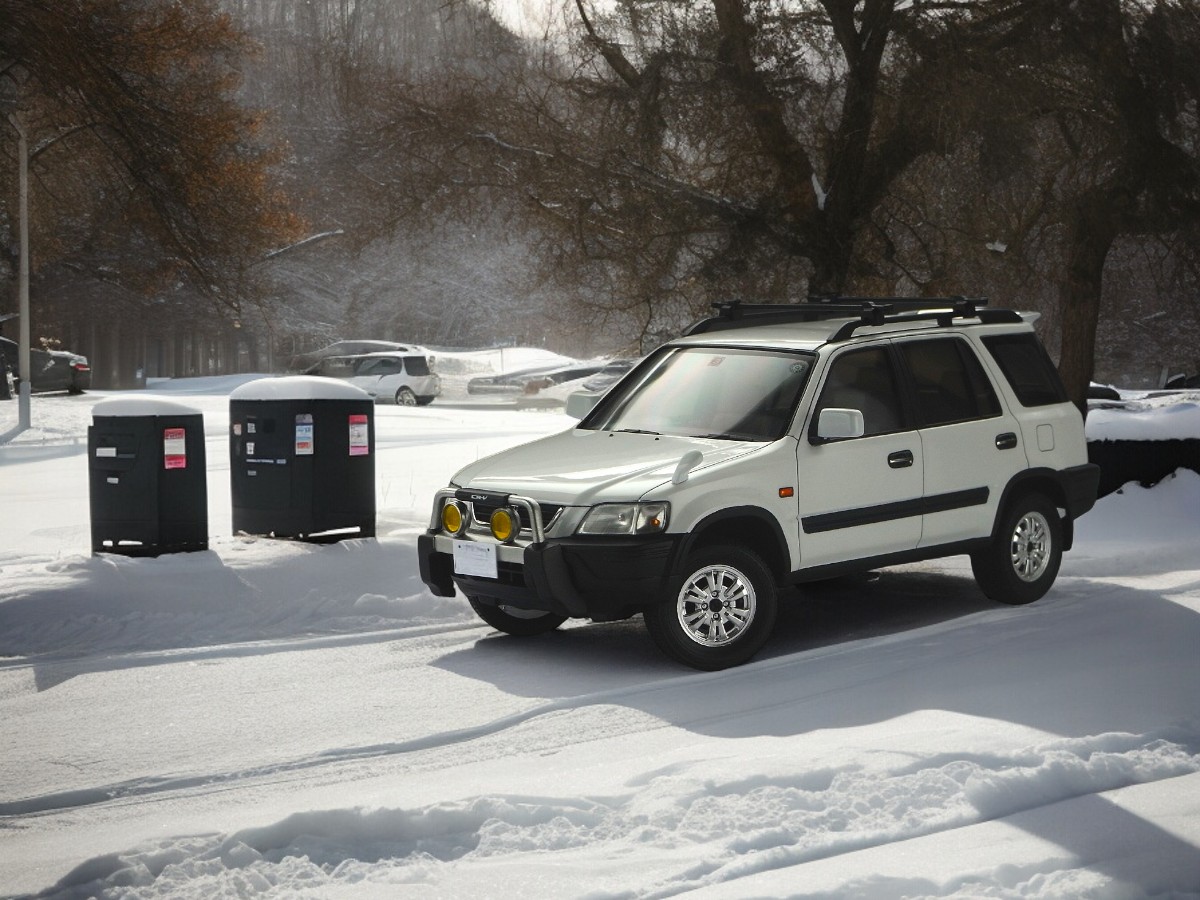
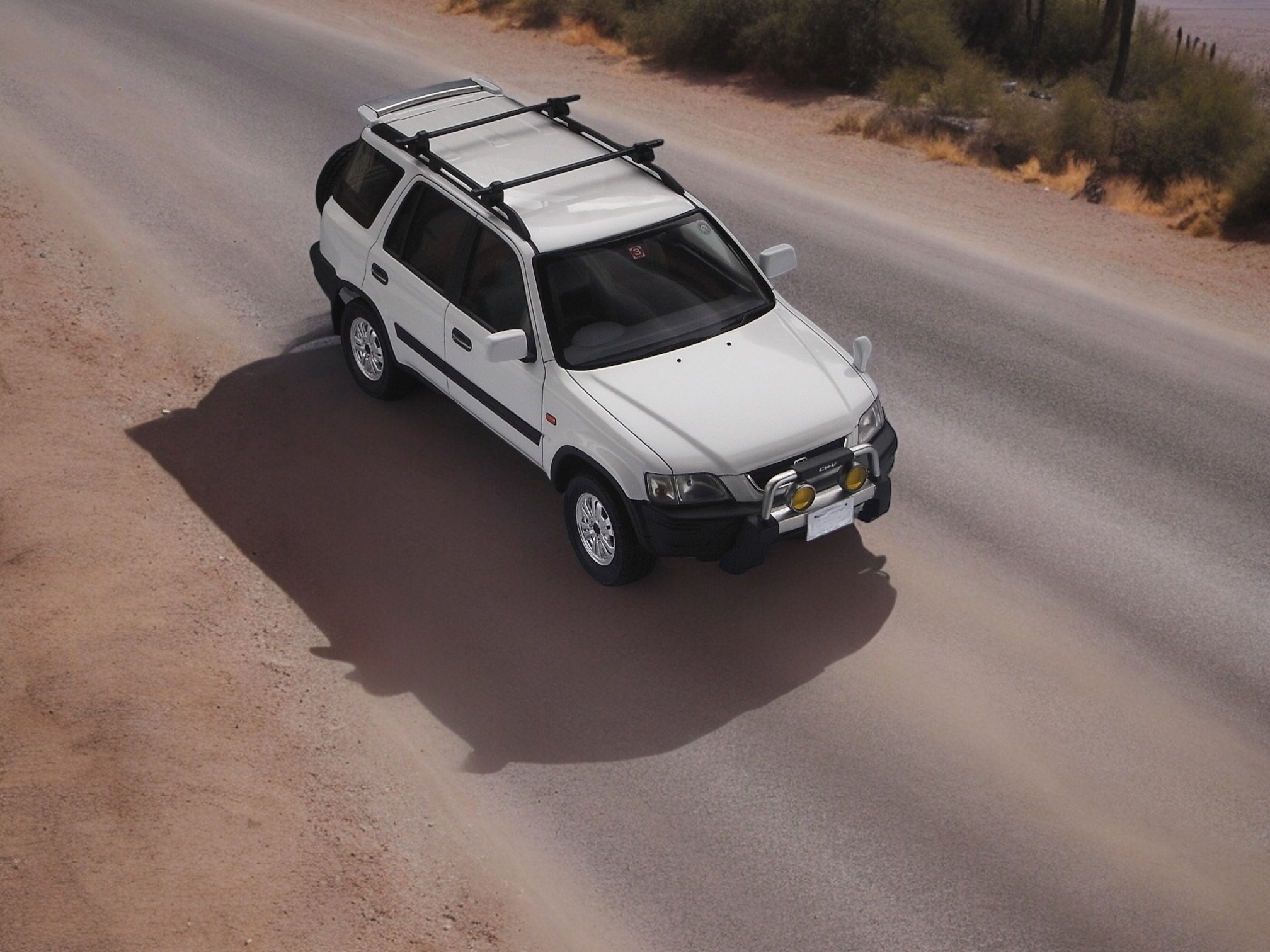
Fuel Efficiency
With a typical fuel efficiency of 26.8 mpg, the RHD first generation CR-Vs from Japan are well ahead of the right-hand drive Jeep Cherokees that have been so popular with rural letter carriers in the past.
You see, while the Honda gets 26.8 mpg, the Jeep can only manage between 15 and 19 mpg (city / highway), so on this score, the CR-V is 58% ahead. And that’s incredibly important for you, as it’s going to help you eke the very most out of your EMA.
Powerful Reliability
Great fuel efficiency doesn’t mean the Honda CR-V’s engine lacks power. Not at all. Even though it’s just a 4-cylinder 2.0 liter DOHC engine (B20B), it’s rated at a very healthy 126 horsepower with 133 lb-ft of torque, which is more than enough to get you around your route.
Add to that power Honda’s amazing reputation for reliability. Did you know that Honda ranks third overall in customer loyalty among non-luxury car brands, just behind Subaru and Toyota, with nearly 60% of owners choosing another Honda vehicle when they trade or sell their current one?
On top of that RepairPal, a well-regarded automotive repair and maintenance information provider, has awarded Honda a reliability rating of 4.0 out of 5.0 – putting it in pole position out of 32 car brands. The reason? Low average annual repair costs, saving Honda owners money compared to buyers of other brands.
Now, although our first generation CR-Vs are obviously not brand-new, the fact that they’ve spent their years in Japan means 2 things you’ll appreciate.
Firstly they have levels of mileage that would be unheard of for similar age vehicles in the US. And secondly, they have been looked after by careful Japanese drivers – the kinds of people who always do their maintenance by the book, and who are literally forced to keep their vehicles in decent shape by Japan’s strict roadworthiness test requirements. So you can be assured that this incredible Honda reliability will be passed on to you.
(And, talking of reliability, don’t forget that every RHD postal vehicle we sell comes with a 6-month warranty for your peace of mind.)
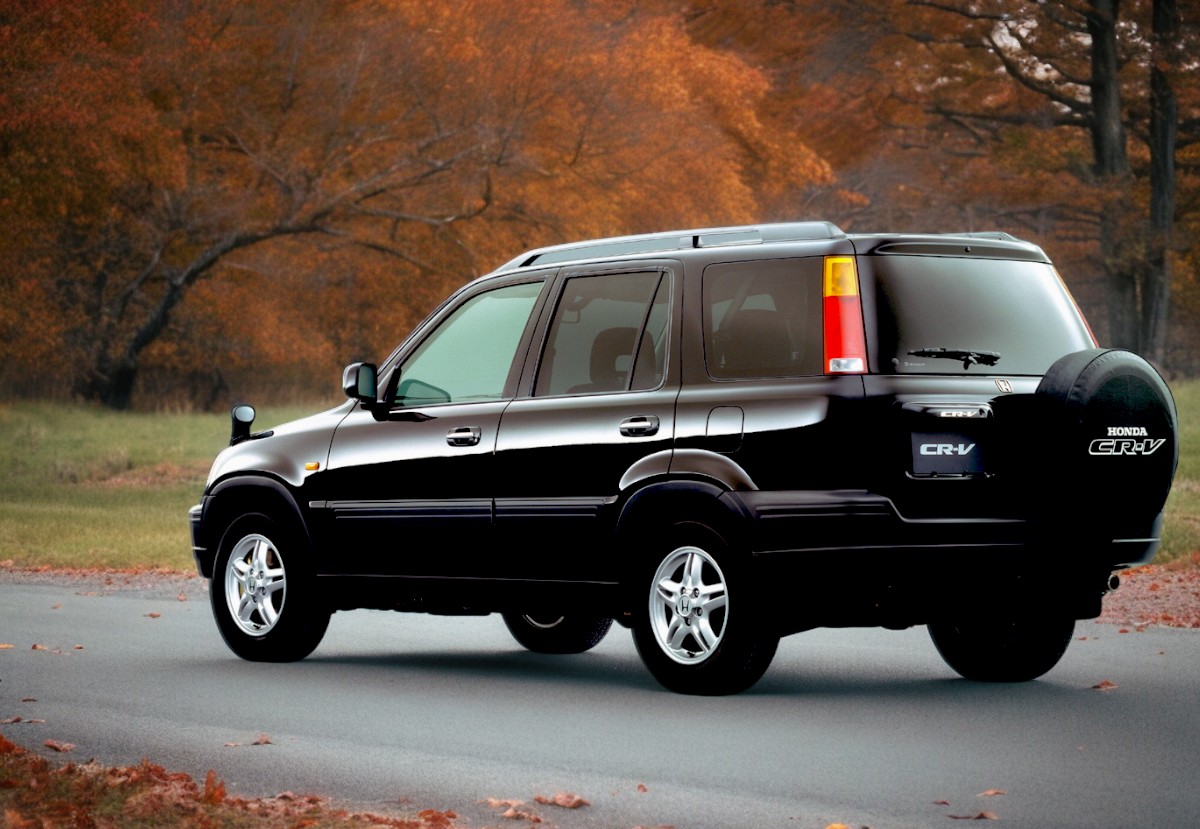
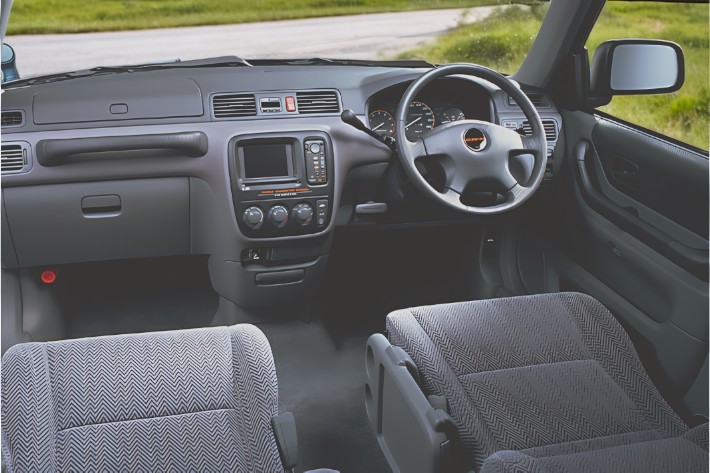
Cargo Capacity
The Honda CR-V’s flexible and spacious interior allows you to carry a large volume of mail and packages – 29.6 cubic feet with the rear seats up, but a massive 67.2 cubic feet when they’re folded down.
This is slightly less than that of the historically popular RHD Jeep Cherokee, but it’s not such a huge difference that you’re really going to notice much – the CR-V has under 10% less.
Rough Roading
The first generation Honda CR-V isn’t humbled by rough roads, with its sophisticated double-wishbone suspension system at front and rear. This suspension setup provides the perfect balance between ride comfort and handling performance – especially important when your mail route has unpaved roads.
The CR-V’s advanced double-wishbone suspension setup effectively absorbs shocks from bumps and potholes. On the other hand, the postal RHD workhorse Jeep Cherokee, uses a solid axle suspension system with coil springs in the front and leaf springs in the rear. The point of the Cherokee’s design is greater durability, but it’s an older design, and the problem is that it results in a stiffer ride compared to the CR-V. When so much of your day is spent in your vehicle, the CR-Vs smoother ride and greater comfort makes a huge difference to how you feel when you clock off.
Then, when it comes to really difficult terrain and slippery surfaces, the CR-V’s 8.1 inches of ground clearance, 29 degree approach angle, and Real-Time 4WD system all mean that it doesn’t give anything up to the Cherokee. On top of this, its sophisticated Dual Pump System enhances 4WD performance by rapidly detecting and reacting to wheel slippage, providing better control in snow, on ice, and in mud.
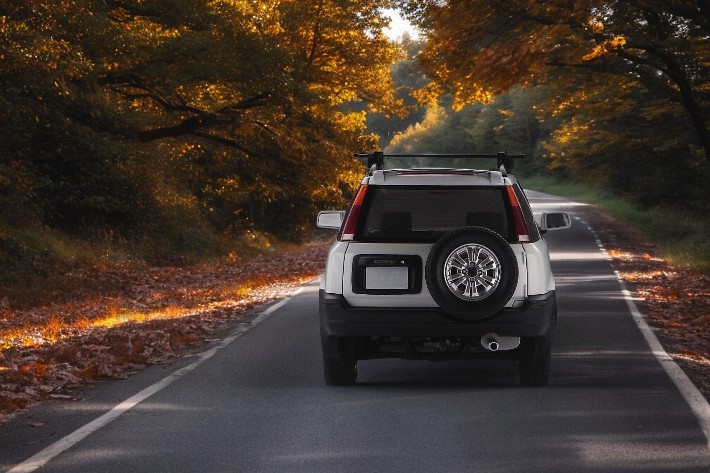
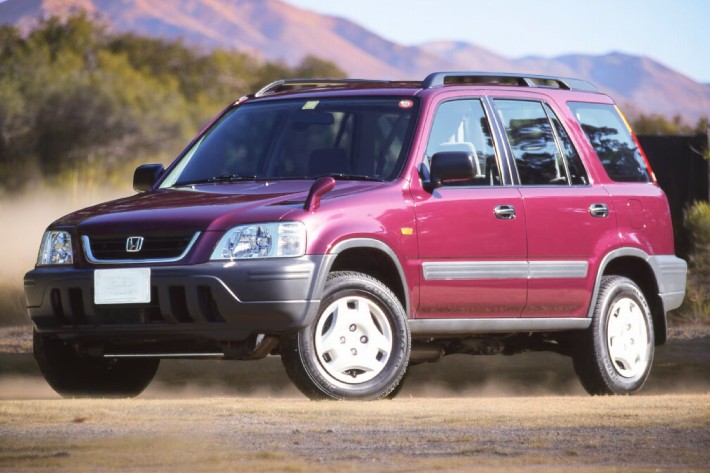
Interior & Comfort
The interior of the CR-V is surprisingly spacious: The seats are wide and comfortable, which is perfect for long hours on the road. Plus, the rear seats fold down flat, giving you a large area for cargo or even a place to sleep. Yes, Honda originally designed this JDM right-hand drive CR-V with car camping in mind! But for you, this means it’s perfect for carrying lots of mail and packages. There is also a wide front-seat armrest with built-in cup holders for added convenience.
In addition to the rear cargo area the CR-V has a lot of conveniently located storage compartments – door pockets, seatback pockets, and the center console. There’s no excuse (and no need) for clutter in your vehicle with so many options to keep everything in your workspace tidied away.
These postal RHD CR-Vs are designed for comfort. They have a strong air conditioning system that keeps the cabin cool in summer, and powerful heat for those winter months. Power windows mean no more hand-cranking, and the highly adjustable seats help you find the perfect driving position with ease. And it’s not just about what it has, but also what it doesn’t have – a lot of noise. A loud engine and lots of road noise can take their toll over a long day, but these RHD Hondas are incredibly refined – helping you to get through your day feeling rested rather than exhausted.
History
This first generation CR-V (RD1 designation) was Honda’s first attempt at designing an SUV ( sport utility vehicle) in-house. It was introduced in Japan at Honda Verno dealerships only because it was regarded as a luxury vehicle since it was slightly larger than what the Japanese government classified as a compact car. Although it was a sales success, with 237,874 units sold as RHD vehicles in Japan, this was the only model created by its designer, Hiroyuki Kawase.
The second generation CR-V built on the RD1’s success, but won’t be able to be brought into the US until 2026, since this generation was not introduced until 2001.
Specifications
Honda CR-V RD1
This is the RHD model recommended for most postal carriers as it has 4WD.
- Engine: 2.0L (1973cc) B20B inline 4-cylinder DOHC
- Power Output: 130 hp at 5500 rpm
Torque: 133 lb-ft at 4200 rpm - Transmission: 4-speed automatic / 5-speed manual
- Drive: Full-time 4WD (Real-Time 4WD)
- Seating: 5 seats
- Fuel Efficiency: Approximately 26.3 mpg
- Dimensions:
Length: 172.6 inches
Width: 68.9 inches
Height: 67.3 inches - Weight: Around 3153 lbs
- Suspension: Double wishbone front and rear suspension
- Brakes: Front disc brakes, rear drum brakes
- Turning Radius: 17.4 feet
- Fuel Tank Capacity: 15.3 gallons
- Notable Features: Power windows, air conditioning, optional sunroof, and multiple storage compartments
Honda CR-V RD2
This the RHD model that can work well for rural postal workers in warmer states where there’s no snow as the front wheel drive results in slightly better fuel economy.
- Engine: 2.0L (1973cc) B20B inline 4-cylinder DOHC
- Power Output: 150 hp at 6300 rpm
- Torque: 133 lb-ft at 4500 rpm
- Transmission: 4-speed automatic
- Drive: Front-wheel drive (FF)
- Seating: 5 seats
- Fuel Efficiency: Approximately 27.3 mpg (10-15 mode)
- Dimensions:
Length: 178.0 inches
Width: 68.9 inches
Height: 67.3 inches - Weight: Around 3153 lbs
- Suspension: Double wishbone front and rear suspension
- Brakes: Front disc brakes, rear drum brakes
- Turning Radius: 17.4 feet
- Fuel Tank Capacity: 15.3 gallons
- Notable Features: Power windows, air conditioning, optional sunroof, and multiple storage compartments

